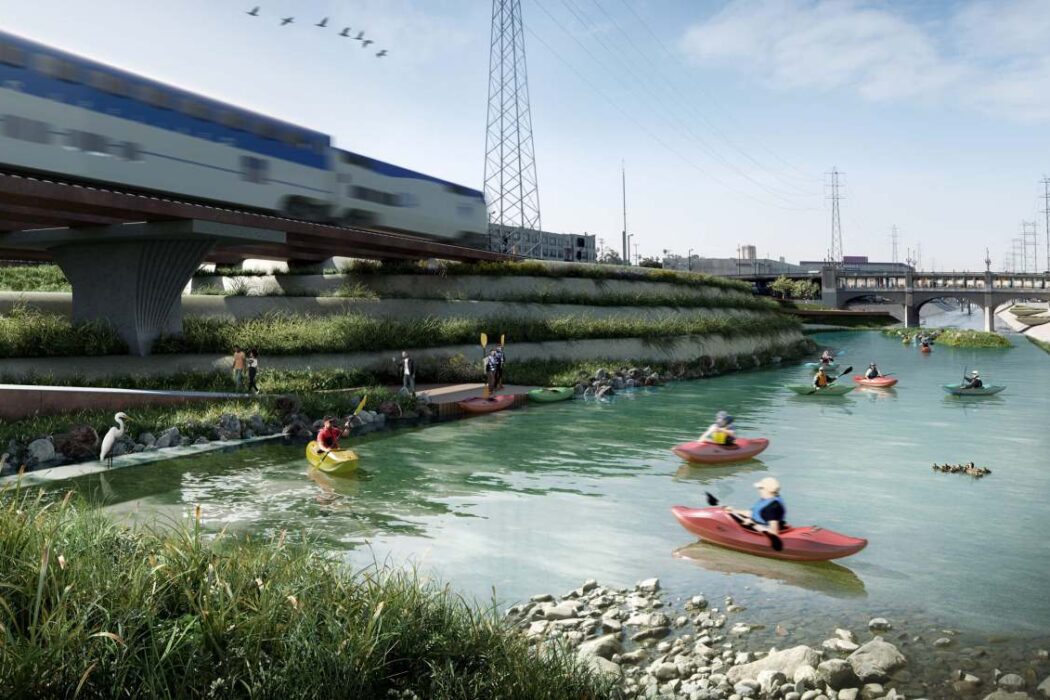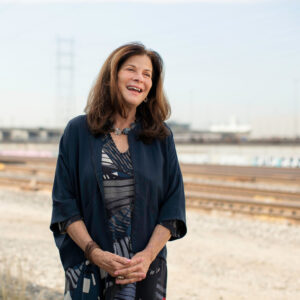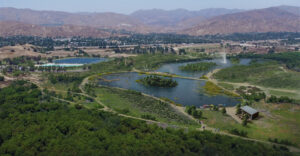Long-time readers of REVITALIZATION know that the restoration of the horrendously over-engineered Los Angeles River—and the revitalization of the many distressed properties that border this concrete monstrosity—has been a long time coming.
We’ve published many articles on the effort over the years, as a long series of public agencies, non-profits and design firms have offered competing visions and plans for its future. Unfortunately, as long as the effort’s champions remain fixated on designs and plans, progress will likely continue to be painfully slow. What’s needed is a strategic process.
Due to its 52-mile length, the initiative has been broken into slightly more manageable segments. One of them focuses on the upper Los Angeles River and it tributaries.
Now, on July 13, 2021, the Upper Los Angeles River and Tributaries Revitalization Plan (ULART)—which creates a comprehensive framework with 300-plus project site opportunities for the Upper Los Angeles River and its tributaries—has earned the global 2021 AZ Award from Azure Magazine.
The winning regional plan—commissioned by the Santa Monica Mountains Conservancy, an agency of the State of California, alongside a working group and the joint-powers authority, Mountains Recreation and Conservation Authority (MRCA)—was applauded for treating the tributaries as “valuable social, ecological, and hydrological players in the fight for equity.”
Studio-MLA led the design for the ULART plan as part of the multidisciplinary team primed by engineering consultant Tetra Tech.
A 23-member working group chaired by Los Angeles Councilwoman, Monica Rodriguez, and including seven NGO partners, ensured a close partnership with the involved communities.
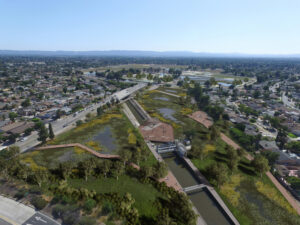 The Upper Los Angeles River and Tributaries (ULART) Revitalization Plan won in Azure Magazine’s “Urban Design Visions” category, which included entries from Italy, Canada, the Netherlands, and beyond.
The Upper Los Angeles River and Tributaries (ULART) Revitalization Plan won in Azure Magazine’s “Urban Design Visions” category, which included entries from Italy, Canada, the Netherlands, and beyond.
“This integrated response to climate change via new green infrastructure, as well as the social infrastructure for renewed equity in cities, is urgently needed,” said AZ Award juror Marc Ryan of Toronto-based design firm Public Work.
Winning projects cited by Azure Magazine “exemplify excellence in innovation, aesthetics, creativity, and social and environmental responsibility.”
The publication received over 1200 entries from 57 countries for the program’s 10 categories. The win adds to the positive response received by recent, wide-ranging initiatives led by the Santa Monica Mountains Conservancy and MRCA.
“The tributaries of the Upper Los Angeles River have been marred by a history of neglect. Today, the hostile concrete landscape offers little in the way of community space or nature or water quality management,” according to Azure Magazine.
“Intending to restore all three, the Upper Los Angeles River and Tributaries (ULART) Plan is led by Los Angeles Councilmember, Monica Rodriguez, Sarah Rascon of the Mountains Recreation and Conservation Authority [on behalf of the Santa Monica Mountains Conservancy], and landscape architecture firm, Studio-MLA, led by Mía Lehrer,” they added.
Along with others, those professionals collaborated as part of the Upper Los Angeles River and Tributaries Working Group, established within the Santa Monica Mountains Conservancy by the California State Legislature in 2017. The team was charged with developing a revitalization plan for the Upper Los Angeles River and its tributaries, with a prioritization on disadvantaged communities.
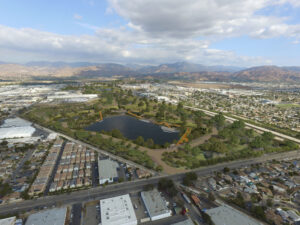 “It was a privilege to lead this effort that begins to address environmental justice issues in communities that have historically suffered from underinvestment. The plan identifies over 300 opportunity sites for open-space amenities accessible to over 625,000 residents who live within a half mile of the river tributaries,” says Councilwoman Rodriguez, the ULART Chair. “Azure’s recognition of this plan, developed in collaboration with the community, is a testament that the work we are doing is elevating the quality of life for residents in these communities.”
“It was a privilege to lead this effort that begins to address environmental justice issues in communities that have historically suffered from underinvestment. The plan identifies over 300 opportunity sites for open-space amenities accessible to over 625,000 residents who live within a half mile of the river tributaries,” says Councilwoman Rodriguez, the ULART Chair. “Azure’s recognition of this plan, developed in collaboration with the community, is a testament that the work we are doing is elevating the quality of life for residents in these communities.”
Sarah Rascon, environmental equity officer for MRCA, adds that the working group for the ULART project has included representatives of municipalities, local community leaders, nongovernmental organizations (NGOs), and elected officials from throughout the Upper Los Angeles River watershed area.
The NGO partners include Sacred Places Institute for Indigenous Peoples, Pacoima Beautiful, Friends of the LA River, The River Project, River LA, the William C. Velazquez Institute, and the Mulholland Institute.
Involved communities that contributed to planning the project’s 344 opportunity areas included six cities throughout Los Angeles County, as well as dozens of Los Angeles city neighborhoods in the Upper Los Angeles River watershed.
“The ULART initiative placed a strong emphasis on disadvantaged areas,” says MRCA’s Rascon. “It also reconnects important tributaries to the Los Angeles River, as it also invests in places that are verdant, yet under-served.”
The Mountains Recreation and Conservation Authority (MRCA) is a local government public entity dedicated to the preservation and management of open space and parkland, watershed lands, trails, and wildlife habitat.
The MRCA works in cooperation with other government partners to acquire parkland, participate in vital planning processes, provide natural resources and scientific expertise, and complete major park improvement projects.
“Among the investments in the ULART plan is the ability to measure and track benefits for resiliency planning in the communities studied, which is critical to the ULART region,” adds Mía Lehrer, FASLA, president of Studio-MLA.
“To achieve the region’s resiliency objectives, we have created a geodatabase and an evaluation strategy that makes project benefits both quantifiable and trackable. Solving these challenges requires an organizing framework and collaboration between designers, geographic scientists, information technologists, community advocates, business owners, and the people who reside in these places,” she continued.
In addition to identifying more than 300 projects throughout some of California’s most disadvantaged communities—as measured using a specialized tool, CalEnviroScreen 3.0—the ULART team designed the solutions in concert with natural processes, and with the potential capture of 8,695 acre-feet of stormwater per year.
“This is a vast contribution for an area facing historic droughts,” says Jan Dyer, PLA, ASLA, principal and director of the Infrastructure Division at Studio-MLA. “The ULART plan also provides over 1,000 miles of shaded green streets and trails, while preserving and enhancing over 6,000 acres of urban wildlife ecology.”
Critics have hailed ULART’s ambitious goals to “recalibrate natural urban waterways by deploying nature-based solutions to create new community space and help rectify decades of neglect.” The AZ Award adds to Studio-MLA’s widening acclaim and influence in its creative, restorative plans for major rivers and waterways that intersect with large cities.
Works like the ULART Revitalization Plan show the powerful influence of landscape architects and urban designers on waterways that have been neglected or routed through concrete structures, separating them from native ecosystems.
“Each of the dozen cities, myriad communities, and land uses along the Upper Los Angeles River have a different texture, character, and setting,” says Studio-MLA associate Jean Yang, ASLA, APA, a planner and landscape designer. “The landscape architecture and planning disciplines provide the tools to make tangible solutions to address the problems revealed in the study.”
The Santa Monica Mountains Conservancy is a State Agency established by the Legislature in 1980. Since that time, it has helped preserve more than 75,000 acres of parkland in both wilderness and urban settings.
The Conservancy’s mission is to strategically buy back, preserve, protect, restore, and enhance treasured pieces of Southern California to form an interlinking system of urban, rural, and river parks, open space, trails, and wildlife habitat that are easily accessible to the general public.
“The ULART Revitalization Plan has also earned official recognition and praise from public leaders,” adds MRCA’s Rascon.
Applauding its focus on local specifics, the ULART Revitalization Plan was unanimously passed by the Santa Monica Mountains Conservancy in March of last year. Irma Munoz, the Santa Monica Mountains Conservancy chair, called it “a historic day.”
The MRCA manages and provides ranger services and fire protection for almost 75,000 acres of parkland that it owns, or which are owned by the Santa Monica Mountains Conservancy or other agencies, and provides comprehensive education and interpretation and leadership programs for youth. It is one of the lead agencies providing for the revitalization of the Los Angeles River.
Unless otherwise credited, all images courtesy of Studio-MLA.

